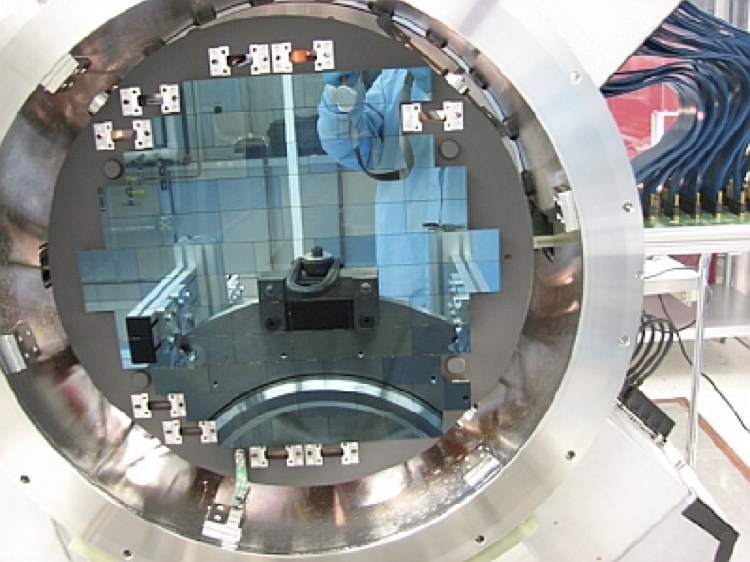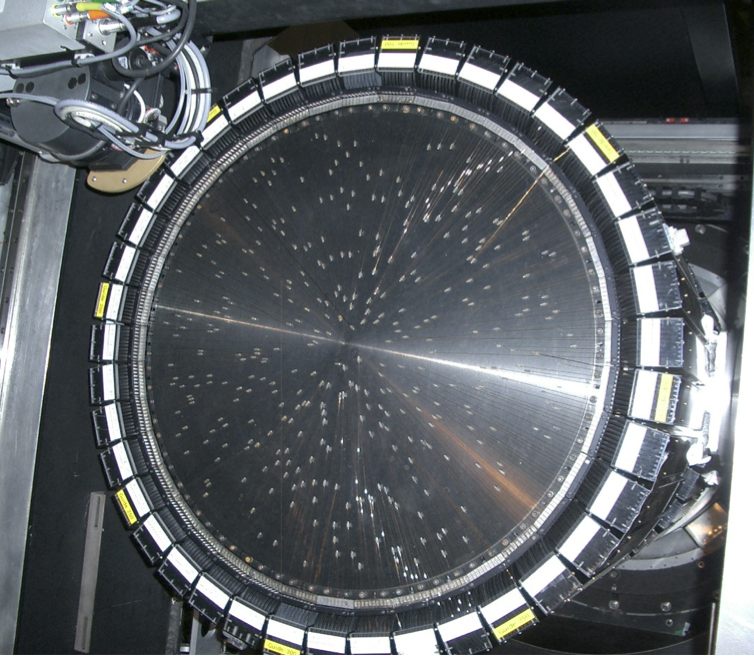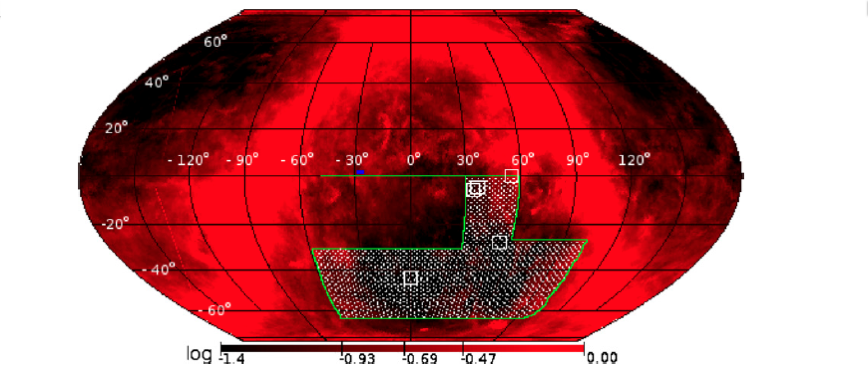OzDES Survey
Overview
OzDES was awarded long-term program status on the 4m Anglo-Australian Telescope (AAT) at Siding Spring Observatory in Australia. We were awarded 100 nights, spread over six B-semesters (Aug-Jan) from 2013-2019. The AAT has played a key role in previous Australia-based cosmology surveys such as 2dFGRS, GAMA, and WiggleZ, and will continue this proud tradition with OzDES.
OzDES used the AAOmega Spectrograph with the 2dF ("Two Degree Field") multi-object fibre positioner to obtain spectra of targets in the DES fields, which will facilitate numerous science goals. 2dF and the Dark Energy Camera are ideally suited for this purpose, as their fields of view are virtually identical (see below).



The field of view of DECam (left) and that of 2dF (middle) are ideally matched (right).
Survey Strategy
OzDES repeatedly targeted the ten DES deep fields (see positions on the sky in the figure below), which comprise the DES supernova survey. This strategy has produced time-lapse spectroscopy of interesting variable objects in the fields, such as active galactic nuclei (AGN) for reverberation mapping. It will allow us to build up samples of multiple redshifts of galaxies in clusters that usually are too close together to target simultaneously, and will enable us to stack spectra over many return visits to probe very faint and distant supernova host galaxies. The observing itself was conducted in a series of multi-night observing runs over six years.

DES supernova fields (white squares), within the overall DES footprint (green hashed region), from Bernstein et al. (2012)
2dF can position up to 400 fibres on science targets in a single pointing. The majority of these fibres were dedicated to obtaining spectra of galaxies hosting supernovae discovered with DES. This efficient means of gathering SN Ia host spectra enables a large fraction of discovered SNe Ia to be placed on the Hubble Diagram. As direct spectroscopic confirmation of all active supernovae cannot be reasonably achieved with the large number of DES SN discoveries, the host spectrum is critical to provide the redshift and to aid in constraining the supernova type and light curve properties.
In addition to SN host redshifts, OzDES observed all active supernovae and other transients that were live during our observing runs, as well as QSOs, cluster galaxies, radio galaxies, and galaxies for additional programs (the "spare-fibre" programs) such as photometric redshift calibration.
